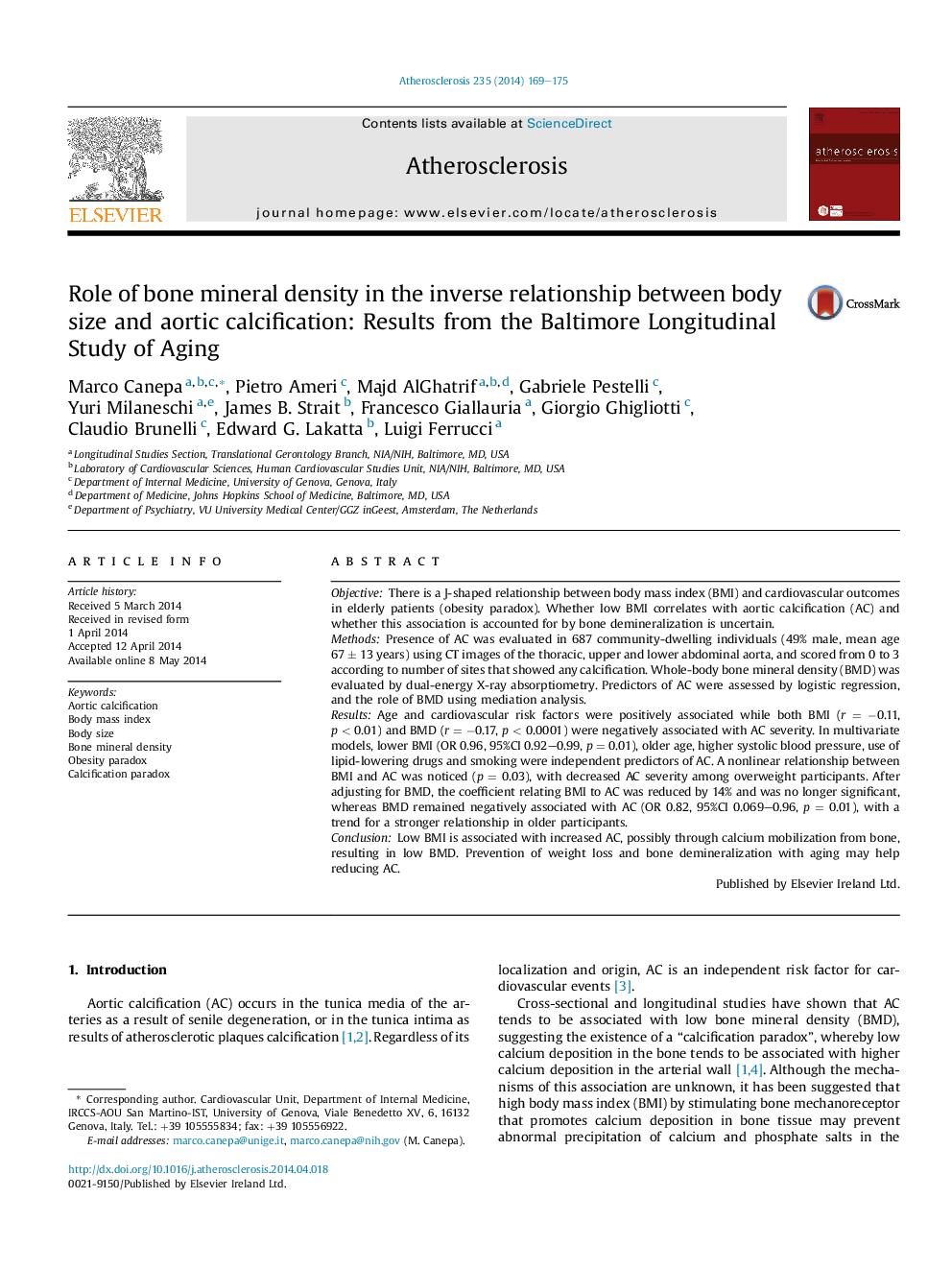| کد مقاله | کد نشریه | سال انتشار | مقاله انگلیسی | نسخه تمام متن |
|---|---|---|---|---|
| 5945556 | 1172352 | 2014 | 7 صفحه PDF | دانلود رایگان |
- We studied determinants of aortic calcification in elderly participants of the Baltimore Longitudinal Study of Aging.
- We confirmed an inverse relationship between bone mineral density and aortic calcification (calcification paradox).
- We also demonstrated an inverse relationship between body mass index and aortic calcification (obesity paradox).
- This relationship was partially explained by the reduction in bone mineral density in subjects with decreased body weight.
- Decreased body weight determines a reduction in bone mineral density, which in turn may increase aortic calcification.
ObjectiveThere is a J-shaped relationship between body mass index (BMI) and cardiovascular outcomes in elderly patients (obesity paradox). Whether low BMI correlates with aortic calcification (AC) and whether this association is accounted for by bone demineralization is uncertain.MethodsPresence of AC was evaluated in 687 community-dwelling individuals (49% male, mean age 67 ± 13 years) using CT images of the thoracic, upper and lower abdominal aorta, and scored from 0 to 3 according to number of sites that showed any calcification. Whole-body bone mineral density (BMD) was evaluated by dual-energy X-ray absorptiometry. Predictors of AC were assessed by logistic regression, and the role of BMD using mediation analysis.ResultsAge and cardiovascular risk factors were positively associated while both BMI (r = â0.11, p < 0.01) and BMD (r = â0.17, p < 0.0001) were negatively associated with AC severity. In multivariate models, lower BMI (OR 0.96, 95%CI 0.92-0.99, p = 0.01), older age, higher systolic blood pressure, use of lipid-lowering drugs and smoking were independent predictors of AC. A nonlinear relationship between BMI and AC was noticed (p = 0.03), with decreased AC severity among overweight participants. After adjusting for BMD, the coefficient relating BMI to AC was reduced by 14% and was no longer significant, whereas BMD remained negatively associated with AC (OR 0.82, 95%CI 0.069-0.96, p = 0.01), with a trend for a stronger relationship in older participants.ConclusionLow BMI is associated with increased AC, possibly through calcium mobilization from bone, resulting in low BMD. Prevention of weight loss and bone demineralization with aging may help reducing AC.
Journal: Atherosclerosis - Volume 235, Issue 1, July 2014, Pages 169-175
